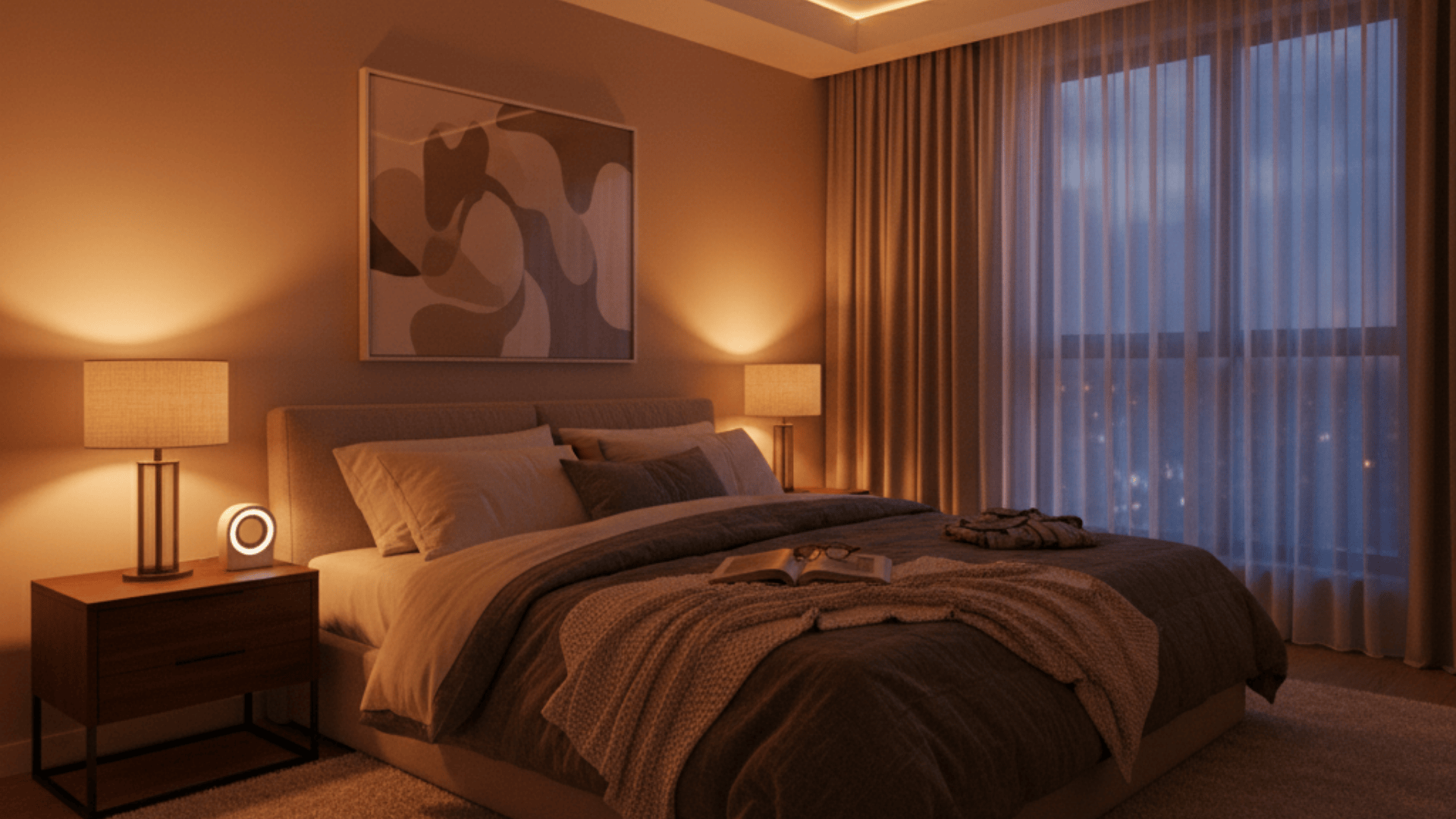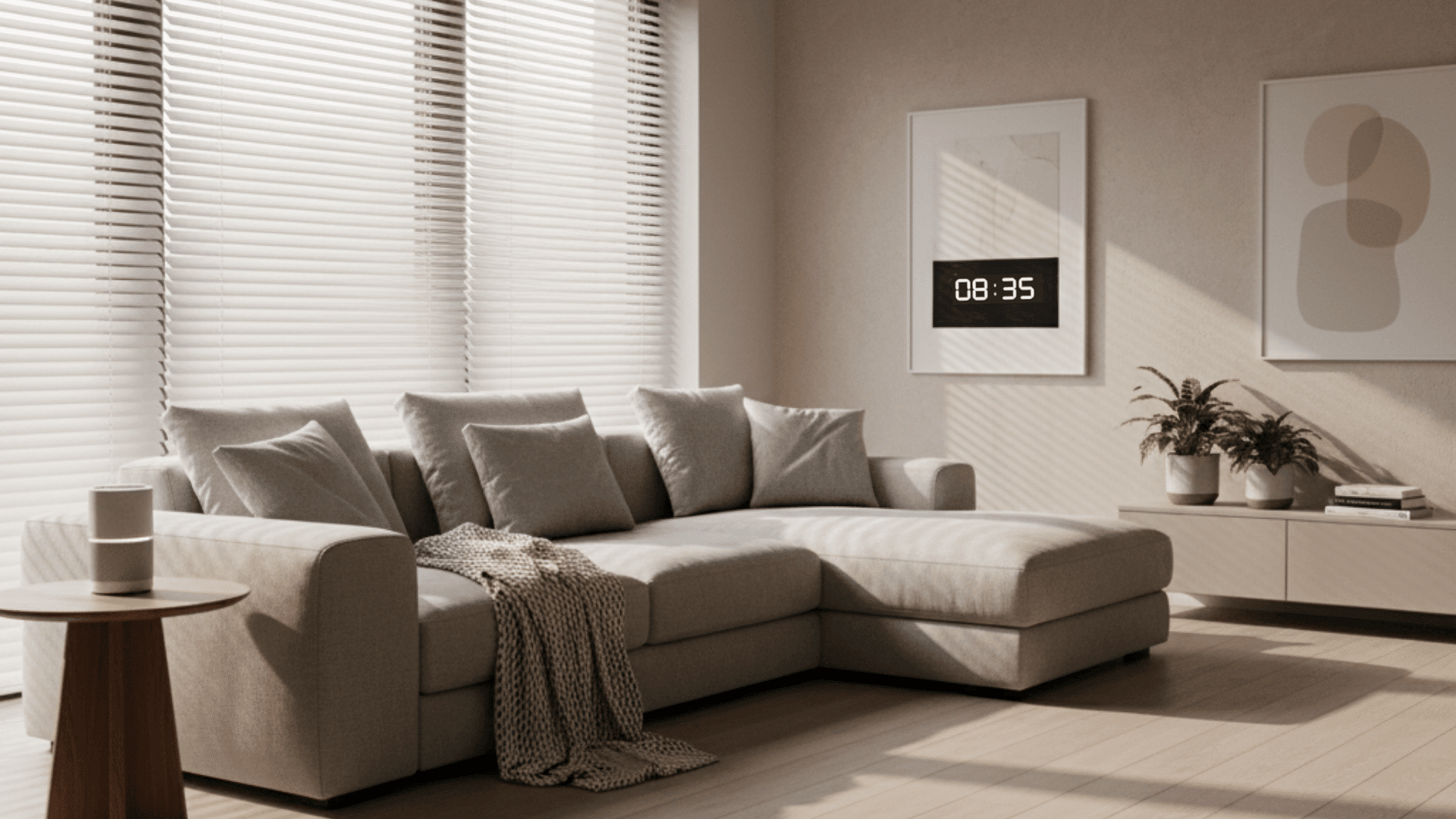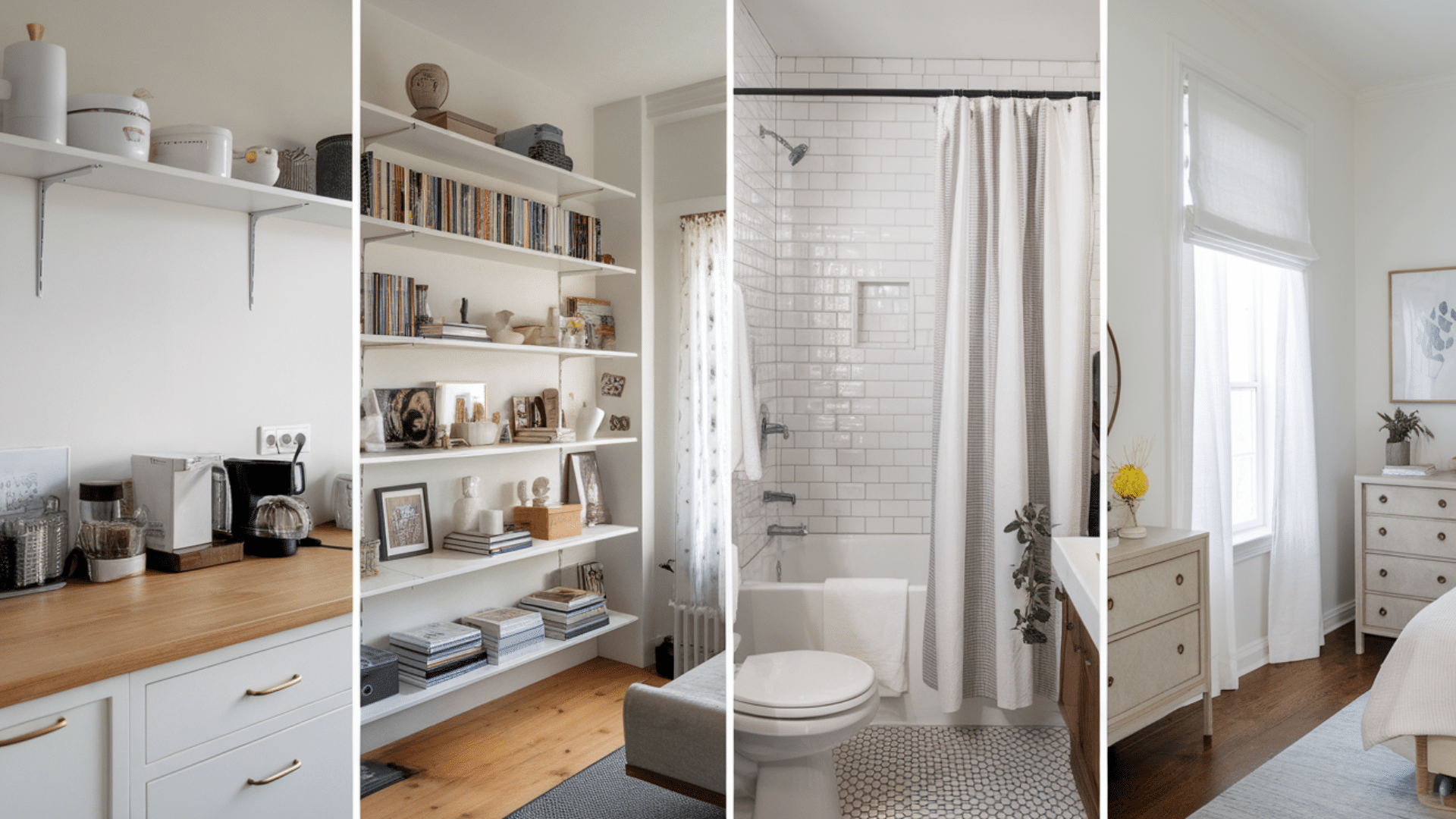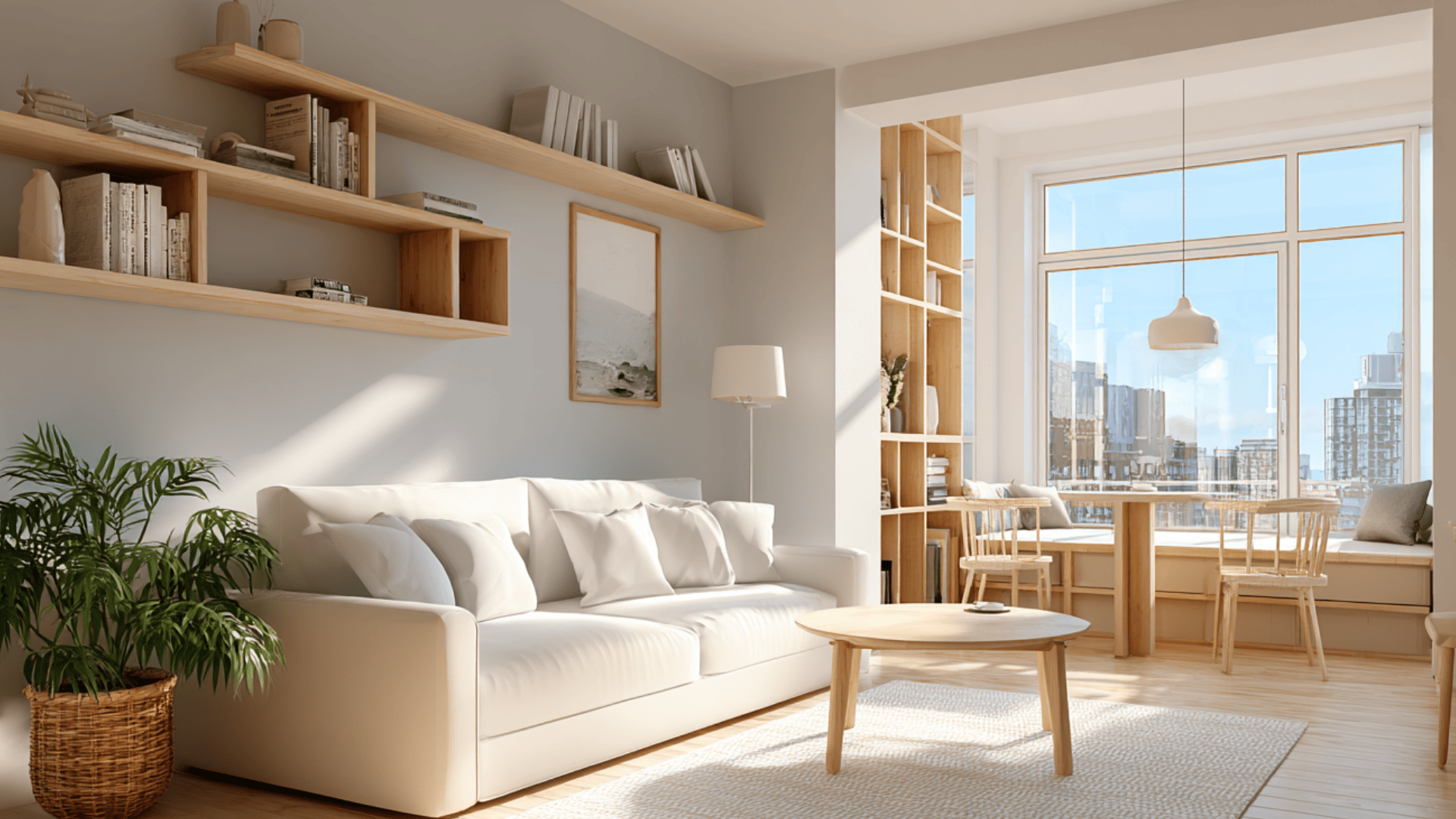These days, home automation isn’t just about smart lights or talking speakers. It’s about making your home truly work for you: saving time, keeping you comfortable, and even cutting down energy costs without effort.
I’ve seen how a few simple automations can completely change daily routines, from waking up to locking the door at night.
You can start small with lights or thermostats and later build full systems that handle everything from security to entertainment.
Whether you’re a beginner or already deep into smart tech, there’s always a new way to make life smoother. Let’s start by looking at what you’ll need to bring these ideas to life.
Getting Started with Home Automation
If you’re just starting out, home automation can feel overwhelming at first. But once you understand the basics, it’s simple to build on.
Automation works on simple logic: If X happens, then do Y.
If motion is detected, then turn on the hallway light. If you leave home, then turn off all plugs. Once you grasp this pattern, it’s easy to build routines that match your daily life.
Tools and Devices You Need
- Smart lights and smart plugs for quick wins.
- Sensors for motion, temperature, or doors.
- Smart speakers or hubs like Alexa or Google Home for voice control.
- Wi-Fi router with strong, stable coverage across your home.
Choose a Hub or Ecosystem
Pick one main system to tie everything together. Alexa, Google Home, Apple HomeKit, and Home Assistant are all good options. It’s easier when all your devices work inside one ecosystem, so check compatibility before buying.
Network and Power Tips
Keep your Wi-Fi strong. Most smart devices rely on it. Place your router centrally, and use extenders if needed. Also, plug smart hubs and routers into surge protectors to avoid sudden power failures.
Good setup habits early on make your automations faster and more reliable later.
Smart Home Automation Ideas That Actually Work
There are endless ways to automate your home, but I’ve found that organizing ideas by category helps you plan better. Start with simple automations, then build your way toward advanced setups that fit your lifestyle.
Lighting Automation

-
Sunset lighting: Turn on lights at sunset and off when you leave a room. It keeps your space bright when needed and saves power when no one’s around.
-
Bedtime dimming: Set lights to fade gently as bedtime approaches. It helps you wind down naturally and makes your evenings calmer and more relaxing.
-
Adaptive color: Adjust light color temperature based on the time of day. Warm light in the evening promotes rest, while cooler tones help you focus during the day.
-
Holiday mode: Program festive lights to activate automatically for special dates or events. It adds a cheerful mood without needing to plug in or set timers manually.
Security & Safety

-
Smart entry: Use smart locks and motion sensors for keyless entry and instant alerts. You’ll know who’s coming or going without checking your phone constantly.
-
Auto garage close: Set your garage door to close automatically after dark or when you leave. It prevents late-night worries about forgetting to secure the house.
-
Emergency response: Link smoke or CO detectors to lights and fans. If danger strikes, lights flash to guide you out safely while fans clear the air.
-
Away routine: Program lights and curtains to mimic normal activity while you’re gone. It makes your house appear occupied and keeps intruders guessing.
Comfort & Convenience

-
Smart climate: Let your thermostat learn your routine and adjust automatically. You’ll always walk into a comfortable room without touching a single control.
-
Automated blinds: Program blinds to open with the morning sun and close at dusk. It helps regulate temperature naturally and adds privacy when needed.
-
Targeted airflow: Use motion sensors to redirect AC airflow toward occupied areas. It keeps rooms comfortable without wasting energy cooling empty spaces.
-
Routine builder: Create morning and bedtime routines with lights, music, and temperature. One tap or voice command can prepare your home for any time of day.
Entertainment & Lifestyle

-
Movie night mode: Dim lights, close blinds, and turn on your sound system automatically. It sets the perfect mood for an immersive home theater experience.
-
Music flow: Connect your speakers so music follows you from room to room. It keeps the vibe going while you cook, clean, or just relax around the house.
-
Smart TV control: Link your TV to a smart assistant for hands-free control. You can change channels, adjust volume, or play shows using just your voice.
Energy Efficiency

-
Solar syncing: Pair smart plugs with solar panels to run appliances during daylight hours. It optimizes energy use and reduces dependency on the power grid.
-
Auto shutoff: Program devices to power down after inactivity. It’s perfect for curling irons, space heaters, or fans that are easy to forget about.
-
Usage tracking: Use smart plugs to monitor power consumption and spot wasteful habits. Over time, these insights help lower bills and reduce your carbon footprint.
Pet & Family Automation

-
Pet care: Automate feeding times, water dispensers, and litter box reminders. You’ll never miss a schedule, and your furry friend will stay happy and well-fed.
-
Child safety: Add night lights that activate with motion or door sensors. It gives kids a safe path at night without leaving bright lights on all evening.
-
Arrival alerts: Receive notifications when your kids or family members arrive home. It’s a simple way to stay connected and know everyone’s safe.
DIY & Advanced Projects

-
Custom builds: Use ESP32 or Raspberry Pi boards to make your own smart devices. It’s a fun way to personalize automations and save money on equipment.
-
Smart monitoring: Add sensors for temperature, humidity, or air quality. Your home can alert you before conditions become uncomfortable or unhealthy.
-
Presence tracking: Detect phones or smartwatches to trigger room-based actions. Lights, fans, or music can follow you automatically for a seamless experience.
-
Scene control: Combine multiple devices into advanced “scenes” with Home Assistant. One command can adjust lighting, temperature, and entertainment instantly.
How to Build Smarter Automations
Once you’ve mastered basic routines, it’s time to make your automations more intelligent. The goal is to make your system respond naturally to your habits and environment instead of relying only on fixed schedules.
Combining Multiple Triggers
Smart automations work best when they react to more than one condition. Try combining time, motion, and activity for smoother control.
For example, lights can turn on only if it’s after sunset and motion is detected. Similarly, your coffee maker can start only when your phone connects to the home Wi-Fi in the morning.
Using layered triggers like these helps your automations feel more human and less mechanical.
Using Sensors Creatively
Sensors can do far more than just detect movement. You can use CO2 sensors to adjust ventilation when air quality drops, or power sensors to switch off devices when energy usage spikes. Weather sensors can close blinds on hot afternoons or pause sprinklers during rain.
For example, a temperature and humidity sensor can turn on the bathroom fan during showers and switch it off once the air clears, keeping your space fresh without manual effort.
In my experience, thinking creatively about sensors adds comfort, saves energy, and improves the way your home responds to real-world conditions.
Handling Errors and Failures
Even the best systems fail sometimes, so it’s smart to plan ahead. Set fail-safe actions for when a device goes offline or a command doesn’t run.
For example, if your heating system doesn’t respond, a backup trigger can send you an alert or reset the connection automatically.
Adding small safety checks keeps your automations reliable and prevents surprises when you least expect them.
Best Devices & Tools
The right devices make home automation smoother and more reliable. Choosing well-supported brands and compatible systems saves a lot of frustration later on.
| Category | Recommended Devices | Connectivity | Notes |
|---|---|---|---|
| Smart Speakers | Amazon Echo, Google Nest Hub, Apple HomePod | Wi-Fi, Matter | Great for voice control and central automation. |
| Smart Plugs | TP-Link Kasa, Meross, Wyze | Wi-Fi, Matter | Easy way to start automating small appliances. |
| Smart Lighting | Philips Hue, Govee, Nanoleaf | Zigbee, Matter, Wi-Fi | Offers dimming, color control, and scene presets. |
| Security Devices | Eufy, Arlo, Ring | Wi-Fi, Matter | Reliable cameras and doorbells with mobile alerts. |
| Smart Thermostats | Ecobee, Nest | Wi-Fi, Matter | Learns your habits for better comfort and savings. |
| Smart Blinds & Shades | SwitchBot, Lutron Serena | Bluetooth, Zigbee | Automates natural light and boosts privacy. |
| Sensors | Aqara, Eve, Shelly | Zigbee, Thread, Wi-Fi | Motion, temperature, CO2, and occupancy sensing. |
Look for devices that support Matter, Zigbee, or Wi-Fi for flexibility and easy setup. Matter devices are ideal since they connect seamlessly across brands.
Keep in mind that you don’t need to go all-in from day one.
- Budget picks: Wyze, Kasa, and SwitchBot offer excellent value with reliable performance.
- Premium choices: Lutron, Control4, and Savant provide deeper customization and long-term stability.
Start small, learn what fits your needs, and expand your setup over time for the best results.
Wrapping Up
Home automation ideas have come a long way from simple lighting controls. Today, they connect comfort, safety, and efficiency in ways that make daily living effortless.
By combining smart devices, creative sensor use, and reliable automation tools, your home can practically think for itself.
I’ve seen how these systems not only save time and energy but also create peace of mind by handling small tasks you no longer have to.
Whether you start with one smart plug or a full home setup, every upgrade adds real value. Take the first step toward smarter living. Try one new automation today and see how it changes your everyday routine.















